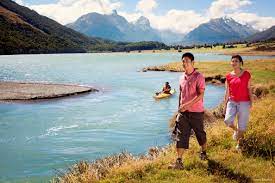New Zealand has taken a step towards using digital credentials for online services with the introduction of the Trust Framework Authority. This body will decide which organizations can provide digital identity services. The digital ID scheme aims to simplify processes like opening a bank account or accessing government services by replacing physical documents with digital verification.
This could have a significant impact on New Zealand’s digital economy. The Minister for Digitising Government, Judith Collins, has already expressed her desire to increase the government’s use of AI in sectors like health and education. However, these developments need to be carefully considered in the broader context of the principles that govern our digital economy.
While digital IDs are crucial for accessing and trusting digital services, they need to be managed and protected in line with our values. This includes considering personal, community, and national perspectives. The development of new digital services and who develops them also need to be considered as part of the wider digital economy.
A recent report by researchers from the Veracity Technology Spearhead project and the domestic cloud provider Catalyst Cloud shows how digital ID is closely linked with data management and information flow. The report suggests that we need to adjust how we build digital systems towards a decentralized model that separates data management from data processing. According to a recent OECD report, such an adjustment is urgently needed to ensure citizens and businesses are safe and have choices in a digital world.
Many countries are recognizing the importance of having their own national data infrastructures. For example, Estonia’s X-Road system, launched in 2001, is the foundation of the country’s e-government services, allowing secure data exchanges between public and private sector databases. This infrastructure has enabled Estonia to become a leader in digital government services, from online voting to digital health records.
However, many local businesses find themselves in a difficult position. They rely on services provided by large tech companies for their digital operations, inadvertently handing over data in the process. Small retailers, for example, may use e-commerce platforms that collect and analyze customer data. While these platforms provide valuable services, they also leak insights that can be used to compete with the businesses they serve.
The challenge for local businesses is clear. They need digital tools to remain competitive, but using these tools often means surrendering control over the data they collect. These data, in turn, fuel the growth and dominance of large tech companies, creating a cycle that’s difficult to break.
The path to creating equitable national data infrastructures is complex and will require collaboration between governments, businesses, and civil society. However, the potential benefits – increased innovation, fair competition, and democratized access to the digital economy – make it a journey worth undertaking.



























































